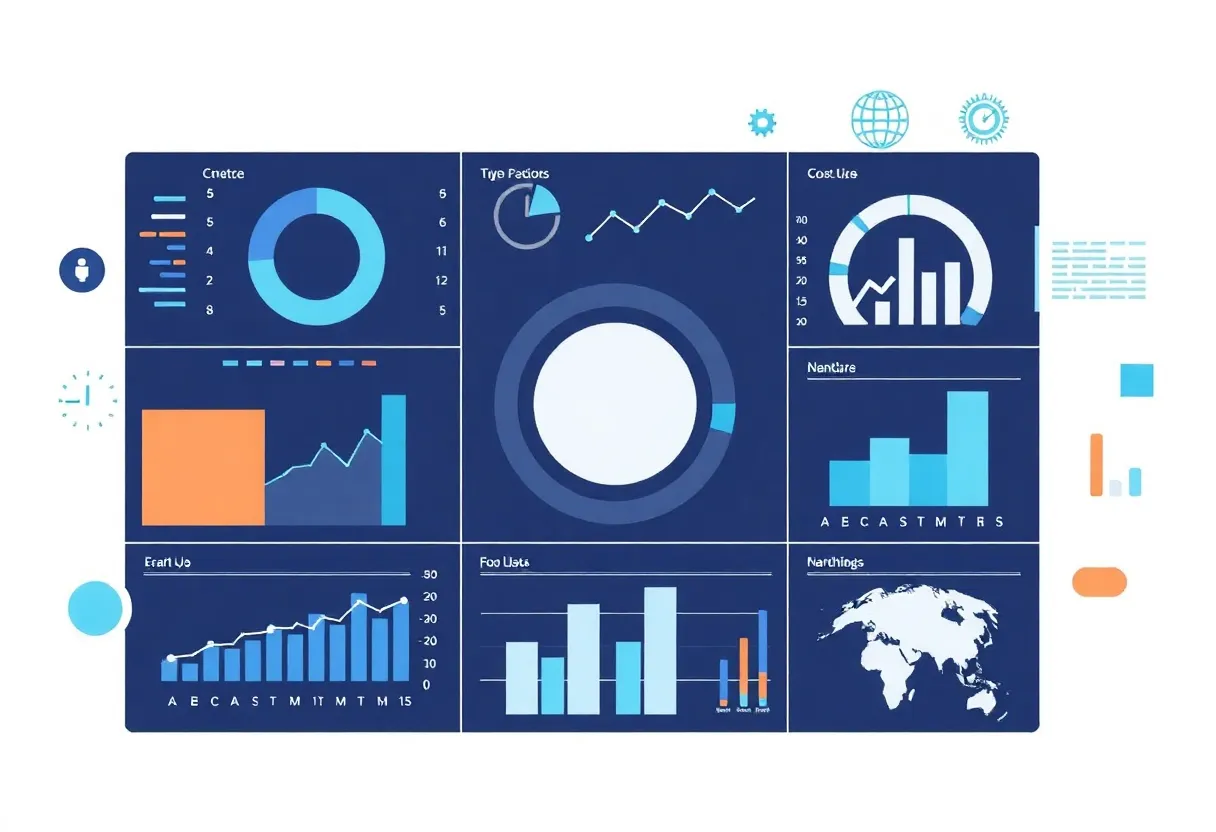

Data visualization with graphs and digital marketing elements
Article Sponsored by:
Real Internet Sales is a digital marketing agency located in Columbia, South Carolina. We specialize in website design and development, SEO, social media management, online advertising, AI integration, and workflow automation. Our services also include affiliate marketing and digital strategy.
Real Internet Sales also offer specialized programming for real estate firms, using IDX and RETS feeds to automatically populate MLS properties on their websites for improved property listings and sales. We also work with clients in the restaurant, tourism, and e-commerce industries to enhance their digital presence and streamline operations.
Want to target the right audience? Sponsor our site and choose your specific industry to connect with a relevant audience.
Prominent brand mentions across targeted, industry-focused articles
High-visibility placements that speak directly to an engaged local audience
Guaranteed coverage that maximizes exposure and reinforces your brand presence
Interested in seeing what sponsored content looks like on our platform?
May’s Roofing & Contracting
Forwal Construction
NSC Clips
Real Internet Sales
Suited
Florida4Golf
Click the button below to sponsor our articles:
Sponsor Our ArticlesIn the ever-evolving landscape of digital marketing, predictive analytics has emerged as a powerful tool. This approach allows marketers to make data-driven decisions, anticipate customer behavior, and tailor strategies to enhance engagement and conversion rates. This article will explore how to effectively leverage predictive analytics in your digital marketing strategy.
At its core, predictive analytics refers to the use of historical data, statistical algorithms, and machine learning techniques to identify the likelihood of future outcomes based on past behaviors. It transforms data into actionable insights, significantly impacting marketing strategies.
Implementing predictive analytics can significantly enhance various aspects of your digital marketing strategy, from targeting to customer experience. Below are some key benefits:
With predictive analytics, companies can segment their audience more effectively. By identifying patterns in customer data, businesses can create more targeted marketing campaigns tailored to specific groups. This leads to improved engagement and better conversion rates.
Identifying at-risk customers is vital for retention. Predictive analytics can highlight customers who are likely to churn. Businesses can then implement targeted campaigns to re-engage these customers, ultimately increasing loyalty and extending customer lifetime value.
Predictive analytics allows for personalized user experiences. By analyzing previous interactions, marketers can recommend products, content, or services tailored to individual preferences. This level of personalization leads to higher engagement rates and improved conversion rates.
By accurately predicting which strategies will yield the highest return on investment (ROI), companies can allocate resources more effectively. Predictive models can analyze past campaign performance and inform future marketing budgets, ensuring that investments are directed toward the most profitable initiatives.
Integrating predictive analytics into your digital marketing strategy involves several key steps:
Identify the specific goals you want to achieve with predictive analytics. This could include improving customer acquisition, retention, or engagement rates. Clear objectives will guide your data collection and analysis efforts.
Gather relevant data from various sources. This includes CRM systems, web analytics tools, social media platforms, and more. The more comprehensive your data collection, the more accurate your predictive models will be.
Select appropriate predictive analytics tools that fit your business needs. Various software solutions offer machine learning capabilities, data visualization, and intuitive interfaces to help marketers analyze and interpret data seamlessly.
Work with data scientists or analysts to develop predictive models that align with your marketing objectives. Utilize techniques such as regression analysis, decision trees, or neural networks to uncover insights that drive your marketing strategies.
Once your predictive models are in place, continually test and optimize them. Analyze the outcomes of your marketing efforts and adjust your strategies based on performance data. This iterative approach ensures your predictive analytics remain relevant and effective.
Predictive analytics can be applied in various digital marketing contexts:
Email campaigns can benefit significantly from predictive analytics. By predicting which customers are likely to engage with specific content, marketers can send targeted emails that resonate with recipients, enhancing open and click-through rates.
In programmatic advertising, predictive analytics can optimize ad placements by forecasting responses to different ads. This data-driven approach helps in targeting the right audience at the right time, reducing costs, and improving ad performance.
Predictive analytics can help businesses understand social media trends and audience behavior. Marketers can analyze engagement patterns and predict how audiences might respond to various types of content, enabling more strategic posting strategies.
By assessing past customer behavior, predictive analytics can score leads based on their likelihood to convert. This process can prioritize sales efforts, ensuring that resources are allocated efficiently toward high-potential leads.
Despite its numerous advantages, implementing predictive analytics comes with challenges:
The accuracy of predictive analytics heavily relies on the quality of data. Poor or incomplete data can lead to misleading insights and ineffective marketing strategies. Organizations must invest in data cleansing and validation processes.
A lack of expertise in data analytics can hinder the effective implementation of predictive models. Businesses may need to invest in training or hiring skilled data analysts to ensure their predictive efforts yield success.
Integrating predictive analytics tools with existing systems can be complex. Organizations may face challenges in ensuring seamless data flow between different platforms and applications.
Incorporating predictive analytics into your digital marketing strategy is essential for staying competitive in today’s data-driven world. By leveraging predictive insights, marketers can enhance customer segmentation, improve retention, and optimize marketing ROI. While challenges exist, they can be addressed through proper planning and investment in technology and expertise. With the right approach, predictive analytics can be a game-changer for your digital marketing efforts.

7001 St Andrews Rd #329 ,
Columbia, SC 29212,
United States
Phone: (+1) 803 708 5514
News Summary Alivia Callaghan, girlfriend of Detroit Lions' Aidan Hutchinson, is gaining recognition as a…
News Summary A recent report by Travel Michigan reveals that the state's tourism sector contributed…
News Summary The owners of several well-known wineries on the Leelanau Peninsula have taken over…
News Summary On Tuesday, Governor Gretchen Whitmer announced that 63 small businesses in Michigan received…
News Summary Over 20 businesses in West Michigan, including Leaping Panda Hobbies, have been awarded…
News Summary Michigan Governor Gretchen Whitmer has unveiled $1.49 million in grants for 63 local…